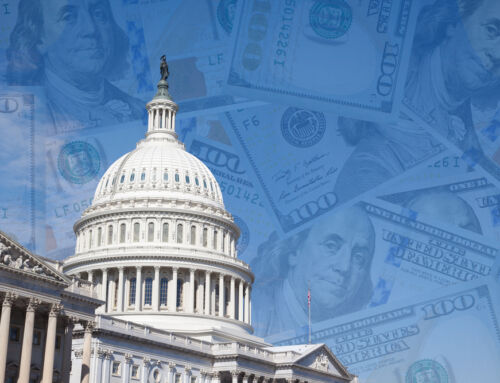When someone is seriously ill, either with a chronic disease or an acute health condition, their loved ones are often tasked with making a series of difficult choices. Among these may be decisions about long-term care, which many times, they are unprepared to make either emotionally or because they lack good information.
In such uncharted waters, families may seek guidance from other loved ones, healthcare providers, or case workers, and those people may all offer different advice. It can be an extremely stressful and even overwhelming time.
The COVID-19 pandemic has shown a spotlight on the long-term care crisis we face in this country and has even exacerbated an already dire situation. There are concerns with the spread of the virus among vulnerable nursing home communities, yes. In addition though, there are also thousands of recovering COVID patients who are no longer contagious and can be discharged from the hospital, but who require skilled nursing care as they recuperate, further stressing an already strained nursing care system.
>> Related: Pre-Crisis vs. Post-Crisis Planning: Confronting Life’s Unknowns
Costly options
No matter the reason assistance is needed by a person, there are basically three options when it comes to nursing care in this country. People can either:
- Pay to have a nurse come to their private home to provide the care services they need,
- The person can move — either temporarily or permanently — to a skilled nursing facility, a.k.a., a nursing home, or
- Loved ones can serve as caregivers on a short-term or long-term basis, but this rarely happens without the additional help of paid support, especially if care needs are advanced.
Of course, either of the two paid options can become expensive very quickly. According to Genworth’s Cost of Care Survey tool, the cost of senior care is rising steadily. In their research, they found that in 2019:
- The national average for a home health aide was $144 per day. (This rate assumes 44 hours per week.) That works out to around $4,385 per month.
- For in-home skilled nursing care, the average cost was $87.50 per visit (the length of a visit can vary but would likely be under an hour in many cases). If one visit is needed every day, that comes to $2,625 per month. Of course, this cost could be on top of the cost for any other home care services.
- If opting for care in an assisted living facility, the cost is $133 per day for a private bedroom. That totals around $4,051 each month.
- For a nursing home, where skilled nursing care is provided, the cost jumps dramatically to $247 per day for a semi-private room and $280 for a private room. Each month, that would cost $7,513 or $8,517, respectively.
>> Related: Many People Underestimate Their Future Cost of Care
The cost of unpaid care
Using Genworth’s projections for the years to come, we can see that all of these care costs are headed nowhere but up. But make no mistake: The cost of caring for a loved one using “unpaid” family caregivers is actually quite high as well.
In 2017, AARP researchers estimated that family caregivers provided a staggering 34 billion hours of care to loved ones with limitations in their daily activities caused by either old age or a specific diagnosis. Based on an average paid American caregiver’s wage of $13.81 per hour, that one year’s worth of unpaid care in the U.S. would cost nearly $470 billion. And that was in 2017; the cost would be even higher at today’s average wage, which starts at around $22.50 an hour, according to Genworth.
But bear in mind that these family caregivers are themselves forfeiting hours of earned wages, retirement savings, and Social Security contributions, as well as other benefits that come with a traditional job. That lost income is also in the billions.
Researchers at the Income and Benefits Policy Center at the Urban Institute in Washington, D.C., have estimated that, as the Baby Boomers age, the total annual cost of lost wages for unpaid family caregiving is projected to reach $147 billion by 2050. Broken down per caregiver, as of 2013, the estimated cost of wages lost to family caregiving was $5,251 per year. These same researchers estimate that that lost wages per family caregiver figure that will jump as high as $6,323 by 2050.
>> Related: The Unexpected Costs of Caring for an Aging Parent
An unexpected expense
When President Franklin Roosevelt signed the Social Security Act in 1935, he created a system that still today improves the lives of millions of seniors. In fact, the Social Security program is credited with lowering the poverty rate among Americans over the age of 65 from 35 percent in 1959 to the current (2019) rate of 9.7 percent.
Taking care for seniors a step further, President Lyndon Johnson signed the Social Security Amendments of 1965 into law, creating both the Medicare and Medicaid programs. Together, these government-sponsored healthcare programs have improved senior, low-income, and disabled Americans’ access to good healthcare, as well as increased life expectancy for those groups. When it comes to nursing care needs, however, the Medicare picture is mixed.
If a Medicare beneficiary qualifies for short-term care in a skilled nursing facility, such as when recuperating from a hospitalization for an acute illness or surgery, Medicare will pay 100 percent of the cost for the first 20 days of care. Then, for days 21 through 100, the patient is financially responsible for a daily copay of $176. After day 100, the patient is responsible for all costs from that point forward.
As beneficial as Medicare is for seniors’ health, one of the gravest financial pitfalls that too many American families suffer is not realizing that Medicare does not pay for long-term care services at home or in assisted living or skilled nursing care facilities. (For low-income patients, Medicaid does include long-term nursing home coverage, but a senior must be destitute to qualify.) This is the unexpected care, and cost, hurdle that too often forces families to resort to using unpaid caregiving.
>> Related: How Does Nursing Home Billing Work?
More care recipients with fewer caregivers
A whopping 52 percent of people turning age 65 will require long-term care services at some point as they grow older, including 47 percent of men and 58 percent of women, according to Must-Know Statistics About Long-Term Care 2019 data from Morningstar. And this is where the care crisis in this country truly emerges.
And the predicament is two-pronged…
First, we are facing an impending shortage of paid caregivers as the U.S. population “grays.” With more people needing care, and fewer people to provide it, the demand will naturally drive up costs, making paid care even more cost-prohibitive to many families.
Secondly, when it comes to unpaid care, the situation also is not improving. In addition to the financial ramifications discussed above, going forward, we also are going to have a significant shortage of family members who are able to serve as unpaid caregivers.
U.S. Census data reveals that about one in 11 Americans age 50 and older lacks a spouse, partner, or living child — a number that will increase in the years to come as marriage rates continue to decline and people have fewer children (and have them later in their childbearing years). As a result, the traditional system of caring for aging people — where multiple family members all pitch in to divide the responsibility — is becoming increasingly antiquated.
>> Related: So I’ll Probably Need Long-Term Care, But for How Long?
A long-term crisis with no end in sight
Long-term care is a complex issue in this country with no simple solution. Some believe that Medicare for All, which would add comprehensive long-term care benefits to Medicare and eliminate for-profit insurance and drug companies, is the answer. Others advocate for state-level co-ops or support programs for eligible seniors.
In many ways, this care crisis is occurring in tandem with the COVID-19 pandemic sweeping our country. The senior population has been especially hard-hit by the virus, ravaging seniors’ health and leaving many patients who survive their initial illness in need of long-term care services.
All of this is of course on top of our nation’s increasingly challenging senior health situation with rising rates of dementia, diabetes, stroke, and other long-term health issues that necessitate care. This is why our government, the private sector, senior advocates, and individual families must work together to find a sustainable solution to address the long-term care needs of our seniors. We also must bolster the support system for both paid and unpaid caregivers. There’s no time to waste.






